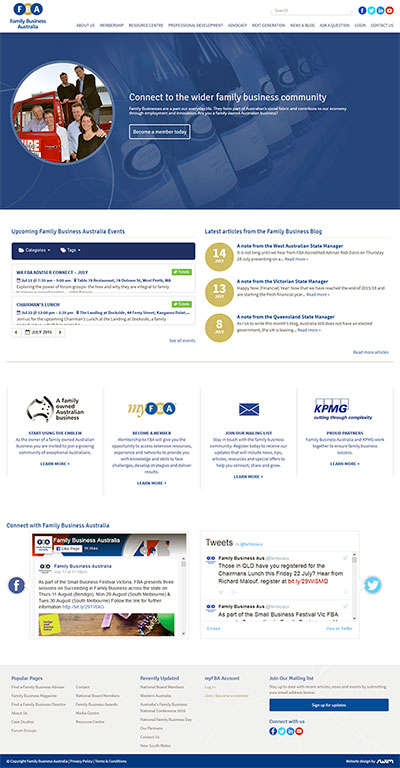Deal with letters of demand in four steps – Whitbread
NEVER ignore a letter of demand (LOD) – no matter whether it has a basis in fact or not. That is sage advice from Whitbread Insurance Brokers to business leaders who, otherwise, may find themselves embroiled in a costly and protracted legal defence.
Whitbread claims teams have seen unfortunate repercussions from many businesses reacting to LODs – also known as a solicitor’s letter – either too late or in poorly informed ways.
That’s why Whitbread has developed a four-step strategy that it advises business leaders to take when they receive a letter of demand: don’t ignore a letter of demand; notify appropriate parties immediately; do not respond to the letter personally and do not admit liability; and finally, do not pay the demand. 
Whitbread Insurance claims team manager Renee Cassidy said a decisive approach to letters of demand is vital.
“If a third party believes you or your business is responsible for personal injury or damage, and they decide to seek compensation, your company will likely receive a letter of demand,” Ms Cassidy said.
“No matter how far-fetched a claim may appear, whether you believe it happened or not, an LOD is never something to ignore.
“Also known as a solicitor letter, a letter of demand is a formal notice demanding that the person to whom the letter is addressed perform an alleged legal obligation, such as rectifying some identified problem, paying a sum of money, or acting on a contractual commitment,” Ms Cassidy said.
“Most demand letters will include a deadline for action, and are often used to prompt payment, avoiding expensive litigation.”
Ms Cassidy said the legal definition of a demand letter, according to the Duhaime.org Legal Dictionary, stated it often “contains a ‘threat’ that if not adhered to, the next communication between the parties will be through a court of law in the form of formal legal action”.
“Essentially an LOD is a demand of payment for damages or injury arising from an event involving the person or entity to whom the letter is addressed,” she said. These days, the demand can come in many forms including e-mail, a phone call or even a conversation in person.
“Your business may receive an LOD if another party alleges your business is legally responsible for third party injury or property damage; or compensation is sought.
“In today’s litigious society, the number of claims for property damage and personal injury have grown significantly. It’s important to note that even if an alleged claim appears ridiculous or unfounded at first glance, an LOD is something you must take seriously.
“If your company fails to address the issue early, the case could end up in court, where legal expenses can quickly escalate into tens of thousands of dollars – even if you’re not at fault.”
Ms Cassidy said Whitbread had developed four key steps business leaders should take when confronted by LODs:
1. Don’t ignore a Letter of Demand
“Under no circumstances should you ignore an LOD. Ignoring even the most preposterous LOD could see your legal situation escalate. We have seen even the most outrageous claims awarded with damages. For example: Damages sought for a torn jacket. An individual walked past an insured’s fence, and tore his jacket on a raised nail. This person then proceeded to send a LOD to our client claiming $80 to replace the jacket. Our client didn’t believe they were responsible for the costs and ignored the LOD.
“Unfortunately as the LOD was not addressed or reported in the first instance, the case went to court. The claimant was subsequently awarded with $1,200 in damages which our client was required to pay, along with the associated legal expenses incurred by both parties.
“Often we find that those who receive a LOD sit tight hoping it will disappear, but generally ignoring a LOD only acts to intensify the problem. If the issue is not dealt with, your business will likely be issued with formal legal action where the case may end up in court. As demonstrated above, this can make the initial issue a substantially bigger than it ever needed to be.”
If a case does go to court, a number of preventable consequences may arise such as:
• Legal costs – a court case will inevitably incur legal expenses and should the judge rule against your business’s case, you may also be required to pay the legal expenses of the third party.
• Excessive damages awarded – damages awarded against your business in court could be far greater than if the case was settled out of court (eg. the torn jacket case).
• Mental angst – involvement in a court case could cause anxiety for business owner(s).
• Reputational damage – court cases can sometimes result in unwanted publicity, leading to reputational damage to your brand.
• Limited insurance coverage – your public liability insurer may not cover the damages and legal expenses in full, particularly if there is a delay in notifying the matter to the insurer. In the insurer’s eyes, the huge costs associated with a case being heard in court could have been avoided, or significantly lessened if an LOD was dealt with when initially received. A suitable settlement for the demand could have been negotiated, circumventing the need to go to court. Based on a scenario like this, many insurers would not pay a business’s liability claim in full, because legal expenses could have been avoided. Insurers in general are unlikely to accept any avoidable legal costs.
2. Notify appropriate parties immediately.
Whitbread Insurance brokers always recommend businesses inform their insurance broker, and public liability insurer, as soon as a LOD is received. Benefits of early notification are:
(a) The insurer will take the situation off your hands. Once your business notifies your Public Liability insurer or insurance broker, the insurer will generally take care of the whole issue from the start on your behalf. This removes the need for your direct involvement in the dispute. The insurer will: Review the LOD and advise on next steps to take; and, if required, engage legal representation to protect your interests, and liaise with the other party and their legal team who are seeking damages.
(b) Expert advice from the start. Your insurer will know the best way to settle the claim, that is, whether it will be more beneficial to settle a claim out of court or not. They will be aware of win/loss trends in court for similar cases, and are in a position to make an informed decision on how to achieve the best and least costly outcome for the claim.
(c) Settlement out of court. The insurer will likely seek to settle the claim as soon as possible to avoid formal court proceedings. Early LOD notification to your public liability insurer can also give the insurer the opportunity to look at alternative ways to resolve the LOD, or share the cost of the damages with another party. In the torn jacket case for example, the home and contents insurer of the person seeking damages could have paid the claim.
(d) Legal expenses covered by insurance. Public liability insurance can cover your legal expenses associated with the claim for damages, up to the limit defined in the policy.
“Don’t be discouraged from reporting a potential claim to your insurance broker or public liability insurer,” Ms Cassidy said. “It is to your benefit to report early, even if the claim doesn’t progress.”
3. Do not respond to the letter personally and do not admit liability.
Instead of responding to the LOD, you need to inform your public liability insurer or insurance broker. The insurer will determine whether there is any negligence attached to the claim on your behalf. There in fact may be no legitimate claim, in which case they will work to have the matter dismissed. The insurer will then respond to the letter appropriately on your behalf.
You should never admit liability (fault) for the incident associated with the LOD. This could leave you open to legal action for damages, and prejudice the insurer’s position. It could be almost impossible to argue your case if guilt has already been admitted.
4. Do not pay the demand.
If your business receives an LOD, refer it to the insurer who will take control on your behalf. Paying the demand could be interpreted as an admission of guilt, leaving you vulnerable to further legal action. There are other things to consider:
Employees: If an employee suffers an injury on your premises you would typically refer the case to the relevant Work Cover authority. The structure around Work Cover differs between the various Australian states and territories – for advice on this, ask your insurance broker.
Products liability: A public liability policy does not cover claims relating to a specific product you may have sold or manufactured, which could result in a liability claim if third party damage or injury is caused by its use or consumption. To protect against events of this nature, a products liability insurance policy is necessary. This coverage differs from a public liability policy.
“Public and products liability insurance is designed to protect you and your business from significant costs associated with legal action as a result of your actual or alleged negligence that has caused third party property damage or personal injury, whilst acting in the course of your business,” Whitbread’s Victorian Leaders facilitator, Holger Schnabel said.
“To help ensure your public liability insurance policy responds effectively, if you receive an LOD, we recommend following the four key steps.”
Whitbread Insurance Brokers is an Industry Expert with Victorian Leaders, the organisation helping to develop the next generation of leading businesses in Victoria.
ends
- This Whitbread insight article is not intended to be advice and you should not rely on it as a substitute for any form of advice. Contact Whitbread Associates Pty Ltd ABN 69 005 490 228 Licence Number: 229092 trading as Whitbread Insurance Brokers for further information or refer to the website.








